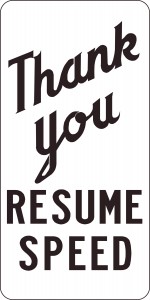Posts Tagged “resume”
Resumes – How to get them “just right”
How to craft the right resume for each job
Recruiters are like Goldilocks —they know the “just right” resume when it lands in their inbox.

Getting up to resume speed
Especially if the information within the resume matches the job description they crafted (or at least posted).
The golden rule for your technical communication job search is “Each job application = a customized resume.”
Sounds simple enough doesn’t it? (well, from theoretical point of view anyway).
So, if you’re going to follow the golden rule and make Goldilocks happy, first take a look at all your various resumes. When you look over them you will probably realize they (a) they don’t reflect all your years of technical communication experience and (b) aren’t customized by specific roles. Now what?
Like when Goldilocks started her journey, she started on a path, one that would take her to the Three Bears house (although she didn’t know that when she began). You will need to take the same approach to craft the right resume – a path that has a beginning middle and end. And keep in mind that the end of the journey will have many different variations.
Start the Journey…
By writing out ever job that you have had. Include company name, location (city, state and country) when you worked there (month and year), title/s and your salary (include the currency if you have worked overseas and any bonuses you received). If you’re, not sure of the dates, go back to old resumes for a memory refresh. Or, talk to friends and family if you can’t remember all the jobs you have had.
Once you have the outline you have the framework to build your long resume upon. The long resume is a complete list of all the jobs you have had, roles and responsibilities and accomplishments.
Describe what your role was at each of the companies (don’t worry if your description is grammatically correct, you’ll work on that later). Jot down all aspects of your role and what you were responsible for.
Now outline your accomplishments. Include any metrics you have for example, did your work on implementing a new online help guide decrease the call and email volume by 50 percent. Attaching a metric to the accomplish helps demonstrate the value you provided to the company. In other words, Goldilocks likes numbers to build a complete picture of you.
Can’t remember everything? A good idea is to talk to former work colleagues, friends and family or review job performance appraisals to gather the information.
Pause and survey the surroundings
In the story, Goldilocks had been walking along the path for a while before she came across the Three Bears house. Before she entered she paused.
This is your time to pause and congratulate yourself. You are half way to completing a long resume, ready to be individually customized for each role.
The document you have created should be rather lengthy, multiple pages of hand-written or typed notes. Before you continue, make a copy, email it to yourself or save this document in the cloud. This is not a document you want to lose.
Spend a couple of hours reviewing your long resume. Now is the time to review every word thoroughly. Ensure the job descriptions are accurate, check the grammar, double check the metrics (remember you are going to have to explain them in an interview) and you have used the correct industry terminology.
Remember to add resume keywords. “Accomplished,” “identified,” “launched,” “scheduled,” and “transformed” are all action-oriented keywords used by Recruiters when using resume screening software tools designed to scan resumes. Here is a good list of words. Also include keywords for the industry you’re aiming for.
Time to Enter the Three Bears House (aka customize your resume)
When Goldilocks entered the Three Bears house she was hungry and ate two different bowls of porridge (oatmeal) before she found the one that was “just right”.
Your resume must be “just right” before that hungry recruiter will become interested and take a bite. Recruiters take an ever more sophisticated approach to reviewing resumes, wanting them to be “just right” before physically reviewing them and sending them forward in the process. . They use the resume screening tool to ensure no resume will be moved forward without the right keywords
How do you work out what is “just right” for this role’s resume?
Start by reading the job description and highlighting particular words, skill sets and qualifications. Use your long resume to extract and highlight those same words and skills and build out the custom resume for this role.
Finish by reviewing the job description and your carefully customized resume. Do the “white glove” proofread, and definitely ask a friend or family member to be an extra set of eyes. Now, your resume is “just right” and ready to submit.
Lastly submit your “just right” resume and head home from the Three Bears house before the inhabitants come back.
